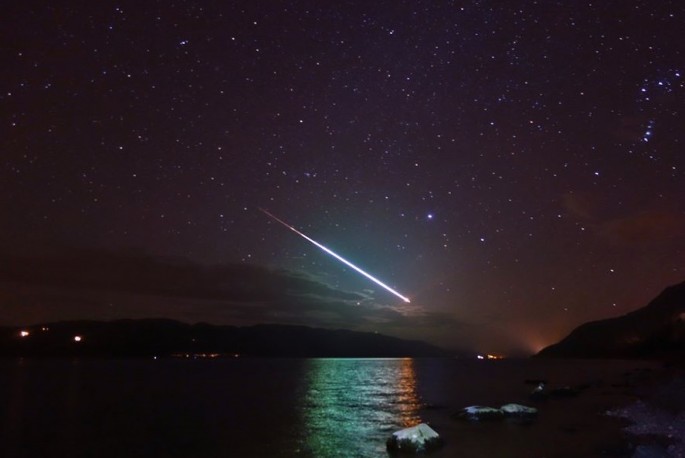A tour guide in Scotland apparently captured a once in a lifetime shot of a meteor flying over Loch Ness.
The lucky photographer who captured this stuning image is John Alasdair Macdonald, 42 who also works at The Hebridean Explorer, providing private tours of the Scottish Highlands. On that fateful night of March 15, he accidentally took a photo of a meteor zipping through the Loch Ness skies.
During that beautiful evening, Macdonald decided to venture out with his camera, just to take photos of stars scattered about the night sky. Macdonald said that it was about 9 P.M. local time when he had a stroke of luck and took out his camera at the right moment when the meteor soared through the sky.
Macdonald claims that he had never seen a shooting star before, explaining how he was stunned during the event. His camera's settings was prepared for a 30 second long exposure that generated this amazing image.
Macdonald said that he was planning taking some new pictures to post on his Facebook page using a Sony RX100 compact digital camera. That night was a beautiful, clear one and he actually acquired nice photos but capturing the meteor on that moment was a fluke he says, where he believes that he will never take a photo like that again.
He adds that he also saw posts online about others seeing the shooting stars that fateful night where the sightings of the Sunday night meteor shower over Scotland were observed all over from Sleaton Skye, Oban, Mull and North Uist.
The spectacular flashing lights from the meteor also caused some concern from locals who thought they were seeing distress signal flares. The Maryport Coastguard Rescue Team were also reportedly flooded with phone calls during the meteorogical event.
Massive or giant fireball meteors are also extremely rare so capturing this event can be possibly considered a great feat. The image can be seen on The Hebridean Explorer's Facebook page and has been viral ever since.
This meteor can be classified as a bolide which can be anything from meteorites to space debris that are burning up when they enter the Earth's atmosphere. Fireballs are classified as meteors that possess a magnitude of -14 brightness, which is brighter than the full moon.



























